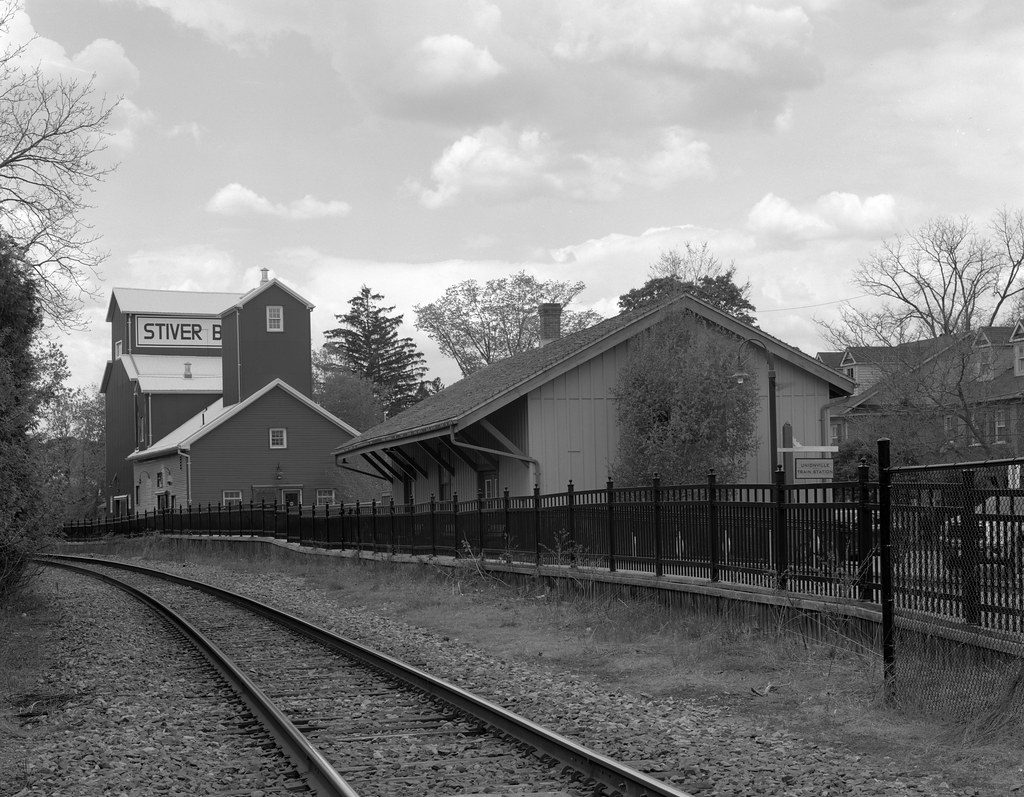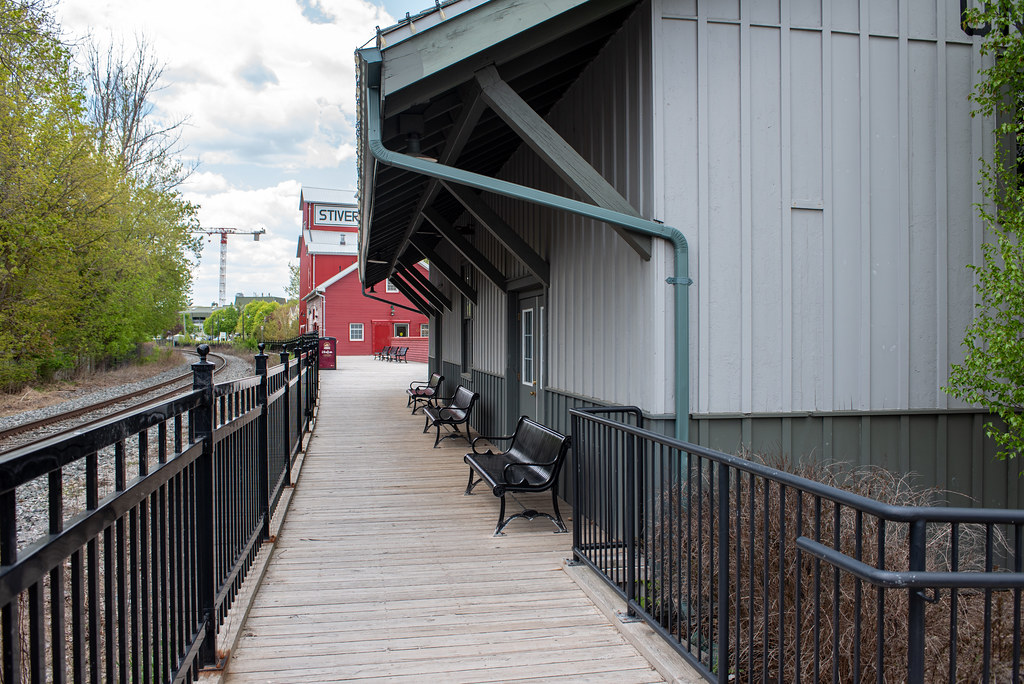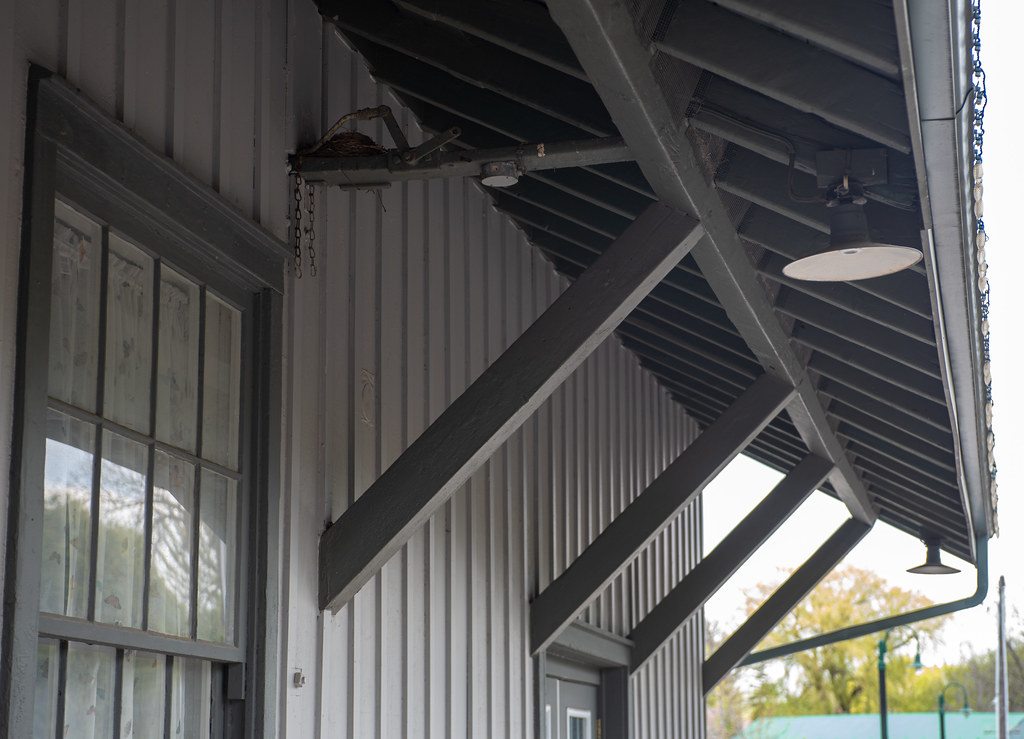Amazingly, many historic railway stations still exist in Ontario. And while many still operate, some of the oldest stations no longer operate as railway stations and are no longer in their original location. And then there’s the Unionville Station. While it no longer operates as a railway station, it remains in its original location and is only one of two surviving stations from Toronto & Nippissing.

Crown Graphic – Schneider-Kreuznach Symmar-S 1:5.6/210 – Ilford HP5+ @ ASA-200 – Pyrocat-HD (1+1+100) 9:00 @ 20C
Following Confederation, in 1867, a second railway boom was starting. Scottish businessman, George Laidlaw who worked for the Gooderham & Worts distillery in Toronto, began chartering new railways. But unlike most railways in Ontario that stuck to Provincial Gauge or Standard Gauge, Laidlaw championed Narrow Gauge. Laidlaw would charter three narrow gauge lines out of Toronto, with only two built to that gauge. The biggest of the two are the Toronto, Grey & Bruce Railway and the Toronto & Nippissing Railway. While Toronto, Grey & Bruce proved a far more popular line, Toronto & Nippissing is an equally important attempt to reach a potential transcontinental line. The construction of the Toronto & Nippissing line started in 1869 in the community of Cannington, Ontario. From Cannington, the line extended north towards Coboconk and south to Toronto. The line constructed a station and small roundhouse near the Gooderham & Worts distillery on Mill Street in Toronto. The original line never planned to run through the small village of Unionville. Still, like many communities before, the business owners of the village saw the railroad as a way to improve their economic standings. Together they purchased 500$ in shares in Toronto & Nippissing to have the line run through Unionville and construct a station. Resident A.T. Button undertook the construction of the station that opened before the line saw completion. The Unionville station followed the Carpenter Gothic Style and was a simple shed type station. There was a general waiting room and baggage and freight room; there was also a station master’s office with a ticket window and telegrapher bay. Being located in a town, the Unionville station lacked a second storey that would have served as living space for the station master in a more rural station. Sadly, none of those stations left, the one in Coboconk having burned down in the early 20th Century. Operations on the Toronto & Nipissing line opened in 1871 and would reach Coboconk in 1872.

Nikon D750 – AF-S Nikkor 28-70mm 1:2.8D
Nikon D750 – AF-S Nikkor 28-70mm 1:2.8D
Unforntantly the line would not reach the desired goal of Lake Nippissing. Instead, they opted to complete a branch line Jackson Point from Stouffville that opened in 1875. And the Unionville station operated well, and the community was pleased to have access. Despite being a narrow-gauge line, Toronto & Nippsissing reached a track sharing agreement with Grand Trunk Railway to lay a third rail and access the newly opened Second Union Station in downtown Toronto. One of the more unique locomotives for Toronto & Nipissing is the Shedden Locomotive, an articulated 0-6-6-0 wheel configuration locomotive. Sadly that is lost to the scrap yard. But the narrow gauge never took off as Laidlaw had hoped. As more and more operators moved towards the Standard Gauge to improve interfacing with American lines, Toronto & Nippissing lagged, having little cash. While they were not financially rocky, they managed to get by without pulling a profit. In 1882 Midland Railroad purchased the entire Toronto & Nipissing network and began converting all its holdings to Standard Gauge. They did continue to operate both freight and passenger service through Unionville. Midland, like many small operators, fell under the Grand Trunk banner in 1893. There is a good chance that under Grand Trunk, the station received a repaint to the early 20th Century colour scheme but never saw replacement under the major renovation efforts conducted by Grand Trunk during the Hayes years. This is not surprising considering that several low traffic stations remained original in the area. Under Canadian National operations continued in 1923. In the 1950s, Canadian National covered the station in insulbrick and painted it that railroad red colour.

Nikon D750 – AF-S Nikkor 28-70mm 1:2.8D
Nikon D750 – AF-S Nikkor 28-70mm 1:2.8D
The station’s fate seemed sealed in 1971 when a fire caused minor damage to the historic station. And with passenger service on the line winding down, Canadian National aimed to demolish the old station. But the community of Unionville, despite being swallowed up in Markham, had a certain view of their historic buildings. They rallied around the old station and raised funds to repair and restore the station for continued railroad use, which ended in 1978 when Canadian National ended passenger services. However, the line saw continued use, and in 1982 GO Transit began operating out of the old station. But showing its age, Unionville again undertook a major renovation and restoration project in 1989. The station was stripped to the original wood and repainted to original colours. GO Transit ceased operations in 1991 after constructing a new station further south with more parking. Remember, the original station had been constructed in the days before widespread commuter traffic and personal automobiles. Instead of demolishing the station, it was sold to Unionville. The village converted the station and nearby Stiver Mill into a community centre which it still operates as today. The nearby rail line remains in active use by Metrolinx that operates as far north as Stouffville. Oddly enough, the Markham GO station remains the only active Toronto & Nippissing Station in Ontario.
1 Comment